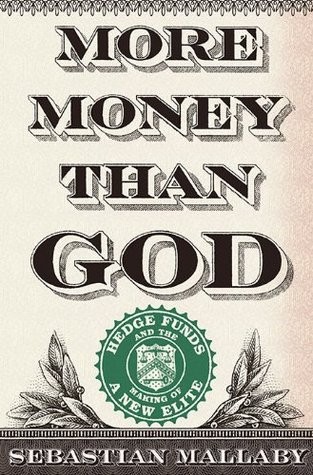A Short History of Hedge Funds
Post on: 3 Апрель, 2015 No Comment

From Aristotle to Amaranth, the funds have lured investors with dreams of heady profits and terrified them with nightmares of risk.
March 27, 2007
Many think of hedge funds as the current flavor of the month in investing and capital markets. But scholars trace the funds’ roots back to a tale told by Aristotle in which the philosopher Thales bet on a bumper olive crop. Thales cannily wrangled with the owners of olive presses until he gained the exclusive rights to use the equipment in the upcoming harvest. Like today’s hedge fund advisers, he used a contrarian trade to profit mightily.
Other experts attribute the invention of today’s lightly regulated capital pools to a eureka moment by Alfred Winslow Jones nearly sixty years ago. In 1949, Jones, an academic and journalist, penned an article in Fortune about new fashions in financial forecasting.
Captivated by the subject, he dropped journalism and decided to try finance himself. He created A.W. Jones & Co. a partnership of four friends, and invested $100,000 in stocks, using a mix of long and short positions buttressed by a healthy dose of debt. He also implemented a scheme to make the managers fee 20 percent of profits, purportedly aligning his incentives with those of investors. That incentive structure remains typical of hedge funds today.
A year after he formed the fund, it earned 17.3 percent, and during the next decade it outperformed every mutual fund by 87 percent, according to Alexander Ineichen’s Absolute Returns: The Risk and Opportunities in Hedge Fund Investing. which also mentions the tale of Thales.
The Early Years
Seventeen years after Jones’s groundbreaking article, Fortune journalist Carol Loomis wrote about her precursor’s success, referring to his strategy as a hedge fund. Soon after Loomis article, hedge funds seemed to be pop up everywhere.
In 1968, the Securities and Exchange Commission counted 140 investment partnerships that it considered hedge funds, according to research by economists Barry Eichengreen, of the University of California at Berkeley and Donald Mathieson of the International Monetary Fund in a report on hedge funds.
Early forays into the field were typified by short selling, which put hedge fund managers. But inexperienced hedge fund managers soon grew tired of hedging their bets and began wagering more heavily on long investments and less on short ones, thus exposing themselves to the stock market. When markets started to slide, so did many hedge funds. According to Eichengreen and Mathieson, assets managed by the 28 largest hedge funds had declined by 70 percent in 1970. Many were liquidated, and the total value of the remaining hedge funds at the time was $300 million.
Because little was heard from the funds during the late 1970s and early 1980s, many came to regard them as a relatively new phenomenon. But in the mid-1980s, now-famous investors such as Julian Robertson and George Soros were still at it: attracting capital, out-running the markets and using high-return instruments and unregistered funds to make eye-popping profits. All these high-worth individuals started saying, ‘Get me into a hedge fund, get me into a hedge fund,’ says Stephen Brown, a finance professor at New York University’s Stern School of Business who has written widely on hedge fund performance.
With more publicity came more hedge funds. A lot of trading desks and commodity-trading advisors began converting themselves into hedge funds, says Brown. With that came new interest in foreign investment, as funds focused on currencies and interest rates. By the early 1990s, global macro investments comprised more than 60 percent of the hedge fund industry, according to Oliver Schupp of the Credit Suisse/Tremont hedge fund index. Although hedge funds are barred from advertising or soliciting business, high-profile success by investors such as Soros attracted global attention.
The Roaring ’90s
Not all of the attention was positive. In 1992 Soross Quantum Investment Fund shook the markets when he wagered $1 billion on the devaluation of the British pound. The speculative move drove Britain to pull out of the Exchange Rate Mechanism (Europes pre-euro system for stabilizing exchange rates), spiking interest rates by 5 percent in a matter of hours. The U.K. Treasury later estimated that Black Wednesday, as it was known, cost Britain 3.4 billion, or about $6 billion in 1992 terms.
Soon after, Soros was demonized by the prime minister of Malaysia for causing the Asian Financial Crisis. Calling him a ‘rogue speculator,’ Prime Minister Mahathir Mohamad said: We have worked 30 to 40 years to develop [our] economy and here comes someone with a few billion dollars and, in just two weeks, he has undone most of our work. Hedge funds were also blamed for the run on Thailands baht. The baht is the only Asian currency for which the hedge funds collectively took significant short positions, say Eichengreen and Mathieson.

As the IMF worked to stabilize Southeast Asias economies, Americas most alarming hedge-fund crisis was brewing in one of its own suburbs. In 1998, Long Term Capital Management (LTCM), a hedge fund in Greenwich, Connecticut, was managing $120 billion on just $4.5 billion in capital, according to an IMF report. The fund, which specialized in betting that interest-rate spreads would narrow, dealt in bonds, swaps, options, stocks, and derivatives. As creditors closed in, LTCM lost 90 percent of its equity in a span of two days.
The Federal Reserve Bank of New York, fearful of the risks that LTCMs collapse could represent for the global markets, orchestrated a rescue plan with 14 other financial institutions to cushion the hedge funds fall. At the time, William McDonough, of the Federal Reserve Bank of New York said an intervention was necessary because an abrupt and disorderly liquidation would have posed unacceptable risks to the American economy. Eichengreen and Matheison referred to it as an out-of-court bankruptcy-type reorganization in which creditors took over the fund and tried to salvage it.
Despite such striking lows, the hedge fund industry swelled considerably in the 1990s. According to Hedge Fund Research, the industry grew (in terms of unleveraged managed assets) from $38.9 billion in 1990 to $536.9 billion in 2001. Since the equity bubble burst in 2000, most funds employ a mix of long-short, event-driven, and multi-strategy approaches, while interest in emerging markets and funds of funds has also grown, says Hoffman, of Credit-Suisse/Tremont. According to the Hedge Fund Association, there are now about 9,000 hedge funds making up an industry worth $1.1 trillion.
The Future of Hedge Funds
Although such growth has excited investors, the crises of the 1990s are still fresh in the minds of regulators. The meltdown at Amaranth, a hedge fund that lost 65 percent of its value last September before closing shop, reminded regulators about the risks posed of mismanaged hedge funds. The SEC has tried without success to require hedge funds to register and conform to tighter regulations. Being more forthcoming would do a lot to allay the perception of systemic risk, says Brown of NYU.
But hedge funds have resisted lifting the veil, and so far the mystique has paid off. These days several mutual funds are offering products that sound remarkably like hedge fund strategies. Investment banks such as Goldman Sachs and Merrill Lynch have launched synthetic hedge funds that attempt to replicate hedge fund returns by using historical hedge fund data while tracking up to 15 indexes of equity, commodity, and bond prices.
Academics have also weighed in, attempting to clone hedge-fund performance by using mathematical models to provide hedge-fund performance with common financial instruments. The goal: matching the reward with less risk and lower fees. Even Aristotle could not have foreseen such advances. Perhaps if Thales had such tools at his disposal, he wouldn’t have bothered with the olive business.
© CFO Publishing Corporation 2009. All rights reserved.














